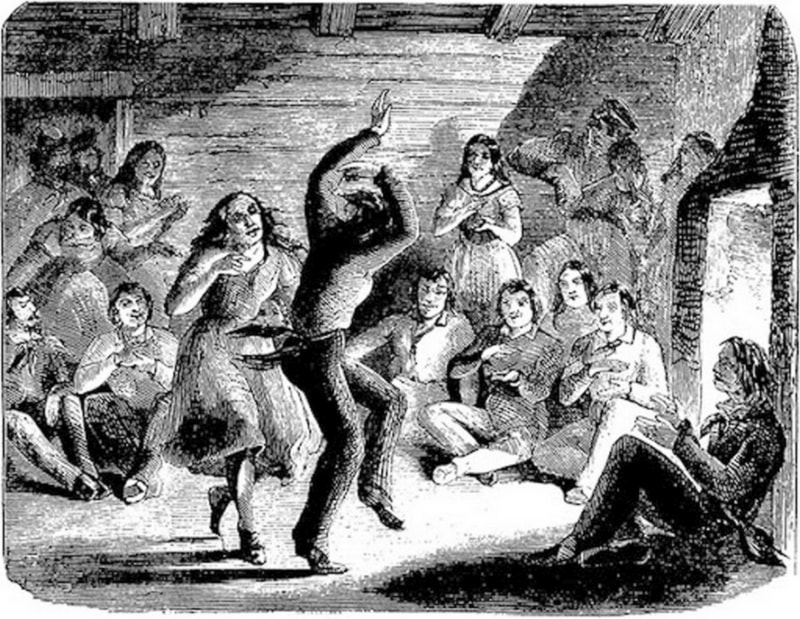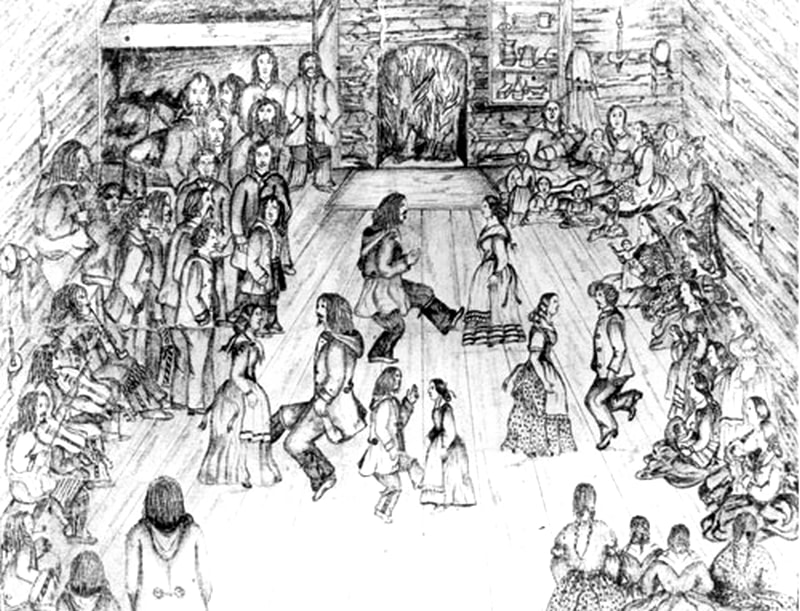|
In traditional Indigenous communities, music and dance are some of the most important ways to preserve and promote culture and to bring people together. While music and dance that are ceremonial in nature preserve our spirituality, secular songs and dances that appeal to our nature of fun, family, and friendship are the ones that are often the most celebrated and which appeal to the broadest segments of our people. Contemporary Pow-wows, for example, are important cultural-revivals that present the most colorful aspects of our expression as Indigenous people. They evoke emotional and psychological overtones that go far beyond the pursuit of entertainment and enjoyment, yet at the end of the day they are at the heart of what makes our communities thrive, generation after generation. The same can be said of the traditional jig dancing of the Metis people.  From the earliest times of the Metis ethnogensis, the Metis took part in the traditional Indian dances of their mothers' peoples. But as missionaries began to exert more control over the Metis, participation in such dancing was greatly discouraged as "savage" and improper as the missionaries thought such dancing was tied to pagan ceremonies. However, the social dances of European and French-Canadian origin weren't seen as such by the clergy, so leeway was granted for the Metis to dance these dances and enjoy the music - as long as it wasn't overtly "Indian" in nature. This general prohibition against traditional native dancing and music, while at the same time condoning it in the European-style paved the way for the Metis to create their own dinstinctive dances and music to satisfy their need for Indigenous cultural expression by blending and blurring the lines. To be certain, the polkas, waltzes, quadrilles, reels, and jigs enjoyed by the Metis were essentially of European derivation with some Metis flair, but the most famous dance of them all - the Red River jig - uniquely featured a combination of Indian dance steps that made it stand out and become immensely popular. A fascinating explanation for the origins and Indigenous roots of the Red River jig are found in a short description given by Louis Goulet, a Montana Metis, recalling a dance/music session during the late 1800s: "During the feast there'd be a big singing contest and after that would come the dancing. Talk about every kind of reel and jig you can imagine! Fiddles, drums, accordions, guitars, Jew's harps and mouth organs, anything was fine as long as it went along more or less with the rhythm. At a shindig like that it was always a contest to see who could play the best, who could dance the best, who could sing the best, who could wear through his moccasins first, who'd be the first to cripple up with cramps in the legs. If the house had a wood floor, it would be creaking under the steady rhythm of dancing feet. If there was no floor, which was usually the case with those winter houses, the bare ground took all the stamping from our moccasins and the spectators were forced out many times in the evening for a breath of air because the dust inside would be suffocating. I often think the Red River Jig was invented one evening like that when sometimes the only instrument was an Indian drum. One night we were all jammed into Omichouche Godin's house in the Judith Basin on the Missouri River. The dance started. There was no wood floor and I don't remember any other instrument than an Indian drum. Some men were sitting on the ground around the drum, pounding away like mad to the rhythm of the Red River Jig while the dancing men and women took turns with wild enthusiasm. Spectators sat on the ground all around the room with their backs to the wall, almost completely invisible because of the dust and pipe smoke. The dancers kept time by clapping and snapping their fingers over their heads, adding an extra touch to the rhythm of their dancing feet. Broken by pauses when we sang, the dancing went on into the wee hours of the morning." Among the old-time Metis, just about any occasion was right for merry-making. The return to Red River from the annual summer buffalo hunt, New Year's Day, weddings, or just because were regarded as reasons for celebration and dancing. Even today, you cannot attend a Metis event or celebration without at least some jigging happening - usually the Red River jig!
2 Comments
|
AuthorKade M. Ferris, MSc
Archives
June 2023
Categories |


 RSS Feed
RSS Feed
